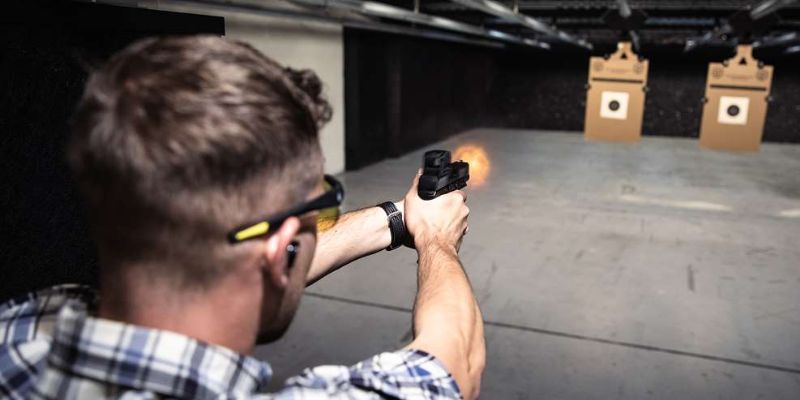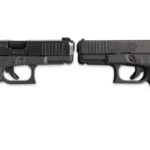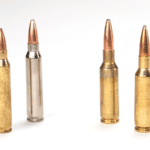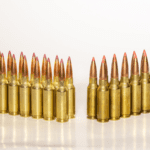In the realm of guns, controlling gun withdraw is a vital expertise that each shooter ought to dominate. After firing a shot, the pistol’s recoil, or movement backward, can affect your accuracy and overall shooting performance. To assist you with further developing your shooting abilities and really oversee gun pull back, this complete bit by bit guide in 2023 will give you important hints and strategies about “How to Control Pistol Recoil Step by Step Guide in 2023?”. This guide will provide you with the necessary knowledge to handle pistol recoil like a pro, whether you are an experienced shooter looking to improve your control or a beginner.
How to Control Pistol Recoil Step by Step Guide in 2023?
Understanding the Effects of Pistol Recoil on Accuracy The backward movement of the firearm caused by the force generated when a bullet is fired is referred to as pistol recoil. It can prompt gag rise, where the front finish of the gun lifts up subsequent to shooting. Because it alters your sight alignment and sight picture, this movement can impair accuracy. You can maintain better control over your shots and reduce muzzle rise by learning how to control pistol recoil.
Mastering Proper Grip
Controlling pistol recoil begins with a firm and consistent grip. Follow these moves toward accomplish a legitimate grasp:
Position your prevailing hand: Make sure the webbing that runs between your thumb and index finger is as high as it can be by placing your dominant hand high on the pistol’s grip.
Use your fingers to encircle the grip: Close your hand around the grip, wrapping your fingers tightly but not excessively tightly. Do not place the fingers of your non-dominant hand over those of your dominant hand.
Place the hand that is not dominant: Make sure that the thumb of your non-dominant hand rests below the slide of the pistol when you bring it into contact with the pistol grip.
Interlock your fingers: Interface the fingers of your non-predominant hand with the fingers of your prevailing hand, making a strong and brought together hold.
Stance and Body Positioning
Your stance and body position have a significant impact on how well you can control the recoil of your pistol. To get the best shooting stance, follow these steps:
Maintain a seated, upright position: With your weight evenly distributed between your feet, stand with your feet shoulder-width apart. Maintain an upright and relaxed posture.
Slightly bend your knees: Flex your knees marginally to give a steady base and retain the backlash energy.
Forward lean: Somewhat lean your chest area forward, putting a little weight on the chunks of your feet. Recoil management can be improved with this stance.
Controlling Trigger Draw
The manner in which you control the trigger straightforwardly affects gun withdraw control. To improve your trigger pull, follow these steps:
Make use of your finger’s pad: Place the index finger’s pad in the middle of the trigger. Try not to put a lot of finger inside the trigger watchman, as it can prompt jerky or mistaken shots.
Maintain a steady, smooth press: Apply continuous and even strain to the trigger. Recoil can be increased and your aim disrupted if you jerk or slam the trigger.
Breathing and Timing
Maintaining control over pistol recoil can be aided by maintaining proper breathing and timing. What you should do is:
Deepen your breathing: Take a deep breath in and slowly exhale before firing. This procedure advances unwinding and steadies your point.
Shoot during the natural pause in breathing: The respiratory pause is a brief moment of your body’s natural stillness following an exhalation. To minimize the potential disruption caused by recoil, fire during this pause.
Using Follow-Through and Follow
Through to Control Recoil: Appropriate completion is fundamental for controlling gun pull back. Concentrate on the following:
Maintain control: Maintain a firm grip on the pistol without loosing it after firing the shot. This ensures that you are prepared for subsequent shots and maintain control over the recoil.
Track your sights: Keep your eyes zeroed in on the front sight and track its development during and after the shot. With this, you can make any necessary adjustments and keep your sights aligned for subsequent shots.
Rehearsing Dry-Fire Activities
Dry-fire practices are a significant device for further developing your backlash control abilities. This is the way to integrate them into your preparation schedule:
Ensure safety before unloading: Eliminate all ammo from the area and twofold check that your gun is dumped. Safety should always come first during dry-fire practice.
Concentrate on trigger pull and grip: Perform dry-fire redundancies while giving close consideration to your grasp and trigger force strategy. Practice pressing the trigger smoothly and steadily without interfering with your sights.
Work immediately arrangement and sight picture: During dry-fire drills, work on getting a good sight picture and alignment. You will become more familiar with the proper shooting fundamentals and develop muscle memory as a result of this.
Drills for managing recoil
Participating in particular drills for managing recoil can significantly improve your control over pistol recoil. Include the following exercises in your training:
Dummy and ball drill: Put a mix of live rounds and dummy rounds (inert cartridges) in your magazine. Your shooting technique’s flinching or anticipation issues will be revealed when a dummy round is chambered. You can identify and correct these tendencies with the help of this drill.
Fast fire with controlled matches: Practice rapidly firing controlled pairs by setting up multiple targets at various distances. Center around keeping up with control and limiting force between shots. Increase your speed gradually while maintaining accuracy.
Solid hand and powerless hand shooting: Shoot with both your strong and weak hands at the same time. This drill helps you improve your overall recoil management skills by developing balance and control in various shooting situations.
FAQs About How to Control Pistol Recoil
Q: What amount of time does it require to dominate gun draw back control?
A: The process of mastering pistol recoil control is ongoing and individual. Within a few weeks or months, noticeable improvements can be achieved with consistent practice and dedication.
Q: Are there explicit gun models that are more straightforward to control concerning draw back?
A: While some pistol models may have design features that help manage recoil better, the most important factor is the shooter’s skill and technique. By following appropriate hold, position, and shooting basics, you can really control pull back no matter what the gun model.
Q: Can the control of recoil be affected by different ammunition?
A: Yes, varying degrees of recoil can be produced by various types of ammunition. More powerful adjusts for the most part produce more backlash. Try out a variety of ammunition loads to find the one that gives you the best control over recoil while still maintaining accuracy.
Q: Is professional training required to improve recoil control?
A: Self-practice can be beneficial, but professional instruction from experienced coaches can significantly accelerate your progress and ensure proper technique. Proficient coaches give customized criticism and direction custom-made to your particular requirements.
Q: How might dry-fire practices help in controlling force?
A: Dry-fire practices permit you to zero in on unambiguous parts of backlash control, like grasp, trigger force, and sight arrangement, without the interruption of live ammo. Normal dry-fire practice improves muscle memory and fosters a more steady shooting procedure.
Q: Is physical fitness a factor in control of recoil?
A: Recoil control can be affected indirectly by physical fitness. You will be able to better absorb and control recoil if you have a strong core and upper body. Normal activity, including strength preparing and perseverance exercises, can further develop your general shooting execution.
Conclusion
In conclusion, mastering control of pistol recoil is an essential skill for any shooter. You can improve your shooting accuracy and your control over pistol recoil by following the step-by-step instructions in this article.
Always keep an eye on your stance, trigger pull, grip, and follow-through. To improve your skills even further, incorporate recoil management drills and dry-fire exercises into your training routine. You can control pistol recoil like a professional with dedication, practice, and the right techniques.







